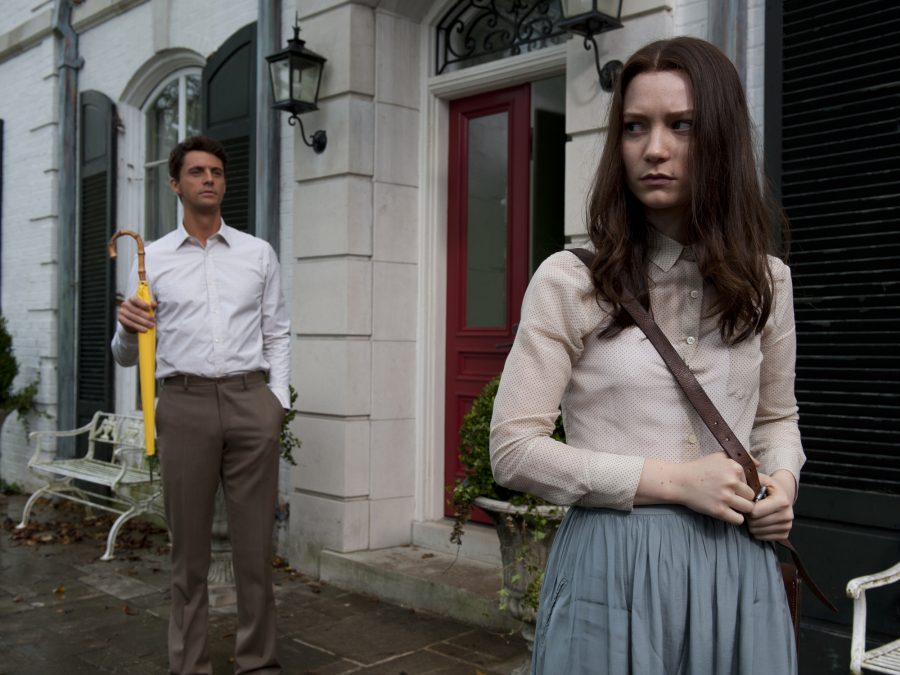
In a Park Chan-wook film, anything can be turned into a fetish: the snap of a leather belt; the strings from a grand piano; the heels on a pair of stilettos. All these objects and more are subjected to the gaze of his camera in Stoker, the Korean director’s English-language debut, and a deliciously twisted coming-of-age film that toys with ideas of performance, gender and sexual perversity within the framework of a taut psychological thriller.
Throughout his career, Park’s work has drawn numerous comparisons to the movies of Alfted Hitchcock, a filmmaker who likewise told tales of intrigue and suspense centred around similarly erotic elements. Many have noted the Hitchcockian influences that can be found in last year’s Decision to Leave, Park’s critically-acclaimed romantic murder-mystery, in its portrayal of a man’s unattainable quest to understand a woman whose own image seems to be in a constant state of flux. But it’s Stoker that is Park’s most consciously referential film, a loose remake of Hitchcock’s own Hollywood debut Shadow of a Doubt. Although both movies chart a teenage girl’s increasingly perplexing infatuation with her mysterious uncle, Stoker transforms the salacious subtext of the original film into full-blown psychosexual melodrama, filtering conventional coming-of-age narrative beats through the lens of one of contemporary cinema’s most tantalising directors.
We first meet India Stoker (Mia Wasikowska) on the morning of her eighteenth birthday, which also happens to be the day her father Richard (Dermot Mulroney) dies in a tragic car accident. At his funeral a few weeks later, she catches her first glimpse of Charlie (Matthew Goode), her sole paternal uncle whose existence she has never been made aware of until this day.
A shot from India’s point-of-view reveals him to be perched upon a hill overlooking the sombre proceedings. India’s relationship with her mother Evelyn (Nicole Kidman, a modern Hitchcock siren if there ever were one) is strained at best, and when Charlie decides to stay with the women for a few days following the funeral, a puzzling game of sexual one-upmanship ensues, as mother and daughter attempt to win the affections of the new man of the house.

For Evelyn, Charlie’s sudden appearance represents an opportunity for an exciting new romance, one that reminds her of earlier days with Richard, “before we weren’t so distant” she says. But for India, his presence sets off a wave of uncertainty within her mind, as people around the Stoker household soon start dropping dead thanks to the work of a shadowy killer. It’s a narrative beat that Park borrows from Shadow of a Doubt. In that film, Hitchcock positions the deaths that Uncle Charlie’s arrival brings to the domestic setting as an allegory for the innocence of Rockwellian suburbia being punctured by the evils of the ‘real’ world.
Though the sexual pathology between uncle and niece is more than palpable throughout the runtime of the 1943 original, figures such as Quentin Tarantino have pondered as to what sort of perversity Hitchcock might have given us if he wasn’t beholden to his era’s conservative Hays Code restrictions. What images could cinema’s greatest pervert, for instance, be able to conjure if he was allowed to explicitly depict scenes of sex and violence?
Park transposes the psychology of Hitchcock’s film to a story with much more frenzied plotting, allowing a teenage girl’s burgeoning attraction to her uncle to develop into something much more transgressive. Throughout the film, Charlie is presented as an elusive object of desire, not just to Evelyn, but to a whole busload of schoolgirls who blush over him as he tails India home in his Jaguar convertible. To his niece though, the death that Charlie brings to the Stoker house is less of a shattering of childhood innocence like in Shadow of a Doubt, but rather a catalyst for India’s own twisted form of sexual maturity.
Naturally, Park explores these ideas without the restraints Hitchcock was bound to, using his mastery of camerawork and editing to connect India’s acute adolescent senses with the rapidly growing bloodlust that Charlie brings out of her. It leads to what may be the film’s most memorable scene, one that straddles the line between provocation and intimacy. After a late-night dalliance with local schoolboy Whip (Alden Ehrenreich) goes wrong, we’re once again placed in India’s point of view, watching as Whip violently tries to rape her. In the foreground though, we see a shadowy figure approaching with a leather belt in hand.
What happens next is only relayed to us later through montage, as we watch India rush into her white-tiled bathroom and hop straight into the shower. As she stands under the stream of water, it soon becomes clear that India is performing an act of self-pleasure, not to the image of any particular man, but to the crack of Whip’s neck underneath Charlie’s leather belt, a death that is revealed to have occurred mere inches from her face. Linking India’s erotic memory of murder to a physical sexual release highlights Charlie’s true role in the film; not as a lover or even a mentor but as a conduit for India to live out her violent fantasies.
For India though, “to be adult is to be free”, so as the film comes to a close Park crafts a finale that allows India to achieve true autonomy; one that culminates with the girl committing her own act of murder and finally emancipating herself from the confines of the Stoker house.
Yet, as she races towards New York in her uncle’s Jaguar convertible, she’s wearing Richard’s belt tied around Evelyn’s blouse, and most interestingly, the pair of stilettos gifted to her by Charlie after Whip’s death. Like most coming-of-age films, the young protagonist takes pieces of their family with them on their journeys out into the world. But in Stoker, Charlie’s thirst for violence might be India’s greatest inheritance. Who knows what these desires might lead to in the future? Blood has never looked so bright.
Published 23 Feb 2023

By Iana Murray
The incomparable South Korean filmmaker reflects on his dreamy neo-noir, Decision to Leave.

The South Korean auteur known for squid-chomping, luxe erotica and graphic torture is back with a seductive mystery thriller.

Decision to Leave reframes the blueprint of Hitchcock’s Vertigo, but it’s not the first time Park Chan-wook has looked back to this classic-era muse.